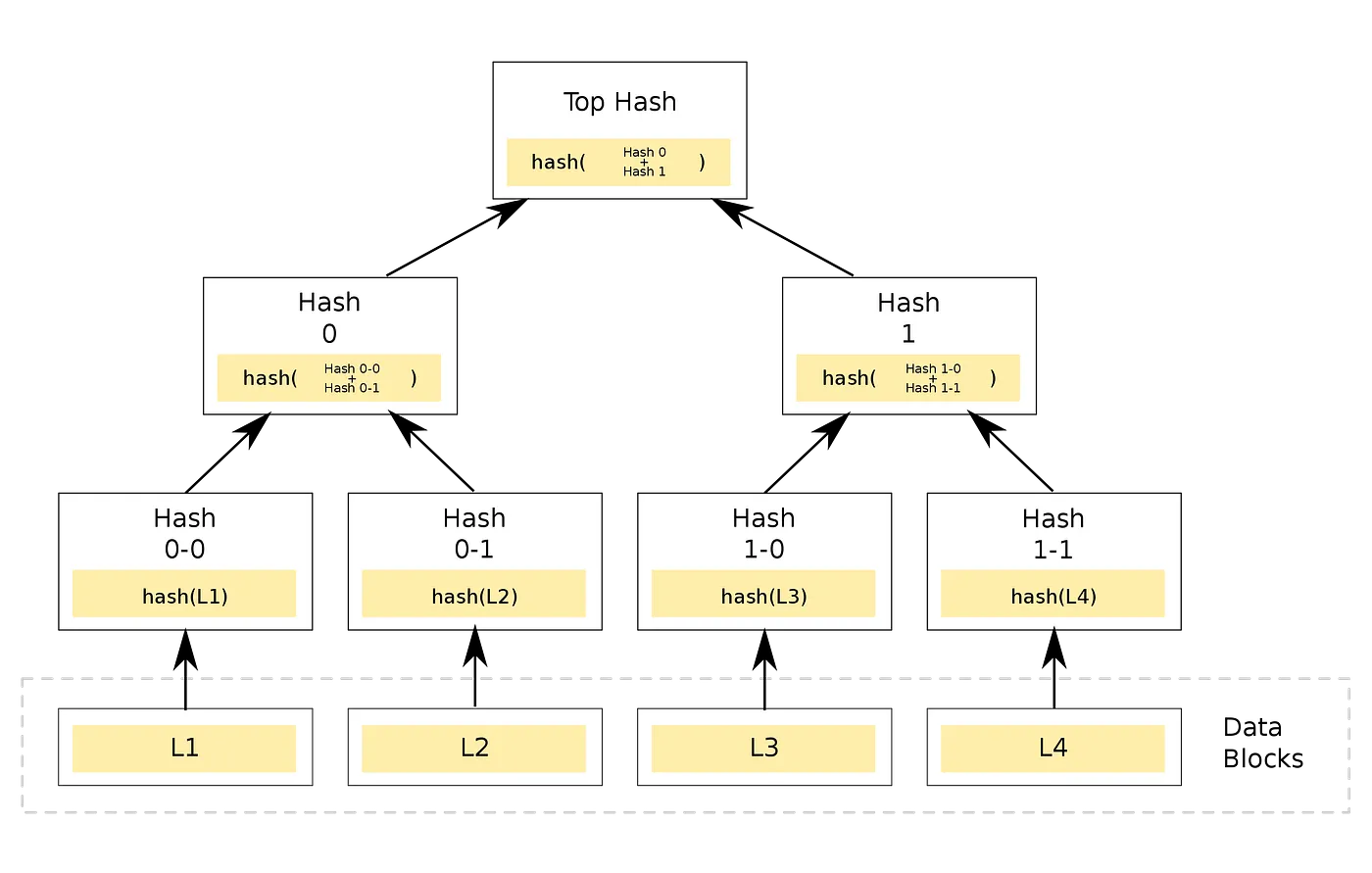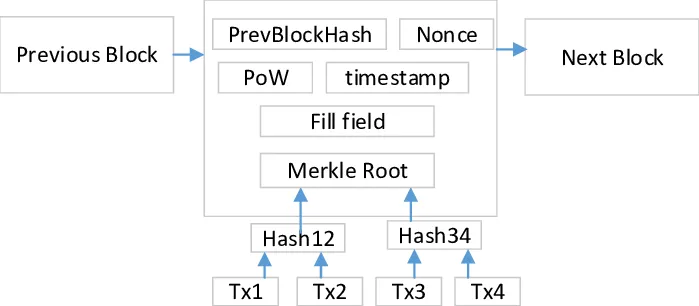Merkle Trees are an essential aspect of blockchain technology that enable the secure verification and storage of data.
Overview
What are Merkle Trees?
Merkle trees, also sometimes referred to as hash trees, are like family trees for data. They’re made up of two types of nodes: leaf nodes, which represent a specific piece of data with a hash value, and non-leaf nodes, which hold hashes based on their child nodes.
The Merkle root node is like the head of the family tree. It summarizes the entire dataset with a hash value that’s calculated from all the leaf nodes’ hashes. It’s the key to verifying the entire dataset’s integrity, and it makes Merkle trees incredibly efficient and secure. Although not primarily used just in blockchain technology, they are especially useful to store and verify large amounts of transaction data.

How do Merkle Trees Work?
Now we know the role of Merkle Trees, let’s dive a bit deeper into how they play a vital role in blockchain technology. When a new block is added to a blockchain, the transactions are grouped together and organized into a Merkle tree structure. The Merkle root node of the tree, which holds a summary hash value, is then stored in the block header alongside other critical information such as the previous block’s hash, timestamp, and nonce.
This efficient and secure structure enables blockchain technology to store and verify vast amounts of transaction data quickly. Merkle trees are like the superheroes that keep the blockchain in check and ensure the integrity and security of transaction data.

To verify a transaction’s integrity, all a user needs is the Merkle root and the hash of the transaction they’re interested in. They can trace a path from the leaf node holding the transaction hash all the way up to the Merkle root, calculating the hash of each child node along the way. If the Merkle root matches the one stored in the block header, then the transaction is valid.
But Merkle trees don’t stop at just verifying transaction authenticity. They also provide an additional layer of security to the blockchain by detecting any attempt to tamper with data stored in a block.
Here’s a nifty side note: Merkle trees make the blockchain more efficient and scalable by reducing the amount of data that needs to be stored on the network. Using a Merkle tree, it’s possible to store a single hash value that represents the entire block’s data. This approach speeds up the transaction verification process and reduces the amount of data that needs to be transmitted across the network, making the blockchain more efficient and scalable. In a way, Merkle trees are like the Swiss Army knives of data security — versatile, efficient, and reliable.
What Makes Merkle Trees so Important to Blockchain Technology?
Let’s talk about how Bitcoin for example keeps track of all its transactions. Imagine if every time you made a Bitcoin transaction, every computer in the network had to store a copy of it. This would take up a ton of space and use a lot of computing power every time someone tried to confirm a transaction.
To solve this problem, Bitcoin uses a Merkle tree. It’s like a summary of all the transactions in a block that is both compact and secure. Here’s how it works:
-
All the transactions in a block are arranged in a tree-like structure.
-
Each transaction is like a leaf on a tree.
-
The tree is built by combining pairs of transactions, hashing them together, and working from the bottom up.
-
Each node in the tree represents the hash of its child nodes.
-
The top node of the tree is called the Merkle root, and it represents a summary of all the transactions in the block.
-
The Merkle root is included in the block header, which is hashed to create a unique identifier for the block.
-
If anyone tries to change even one transaction, the Merkle root would be different, and so would the block hash.
Using this structure, anyone on the Bitcoin network can quickly confirm that a specific transaction has been included in a block without having to download and process that entire block. They can request the Merkle branch that leads from the transaction to the Merkle root, and quickly reconstruct the Merkle root to verify that it corresponds to the one in the block header.
Summary
To summarize, Merkle trees are a critical concept in blockchain technology that enable the efficient and secure verification of data stored on the blockchain. They are an essential component of the blockchain’s data structure and provide an additional layer of security to the network. Understanding how Merkle trees work and their importance in blockchain technology helps us better appreciate its innovative nature and potential to revolutionize various industries. By using Merkle trees, blockchain networks can efficiently and securely store and verify large amounts of transaction data, improving scalability and performance while maintaining high levels of security.